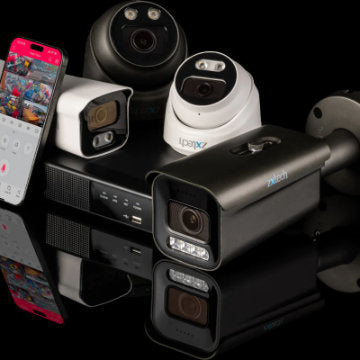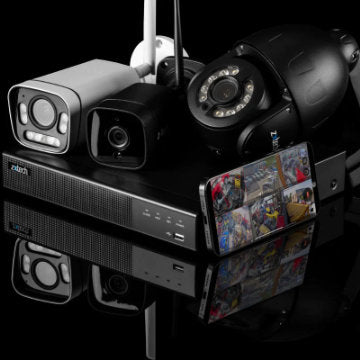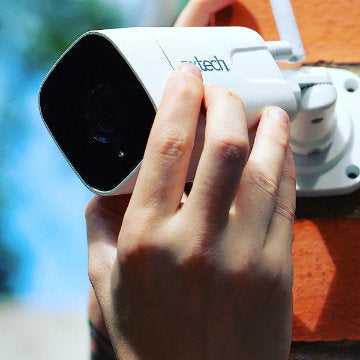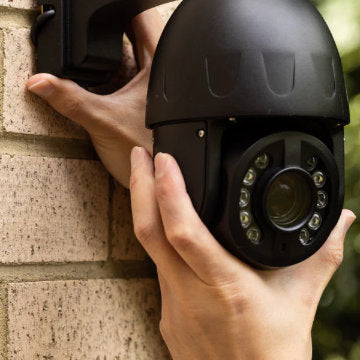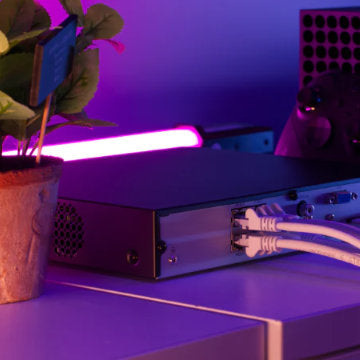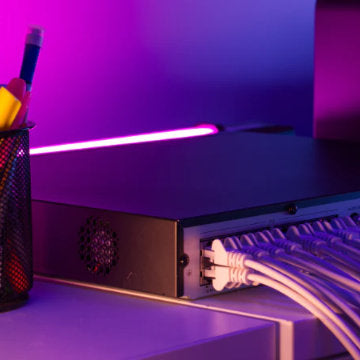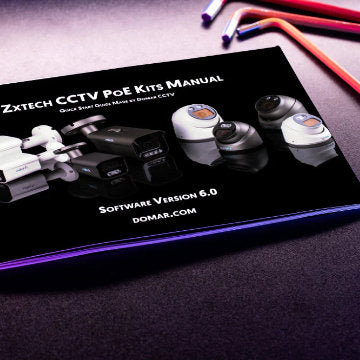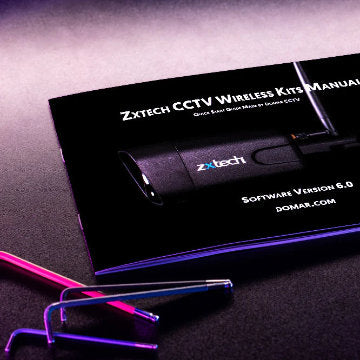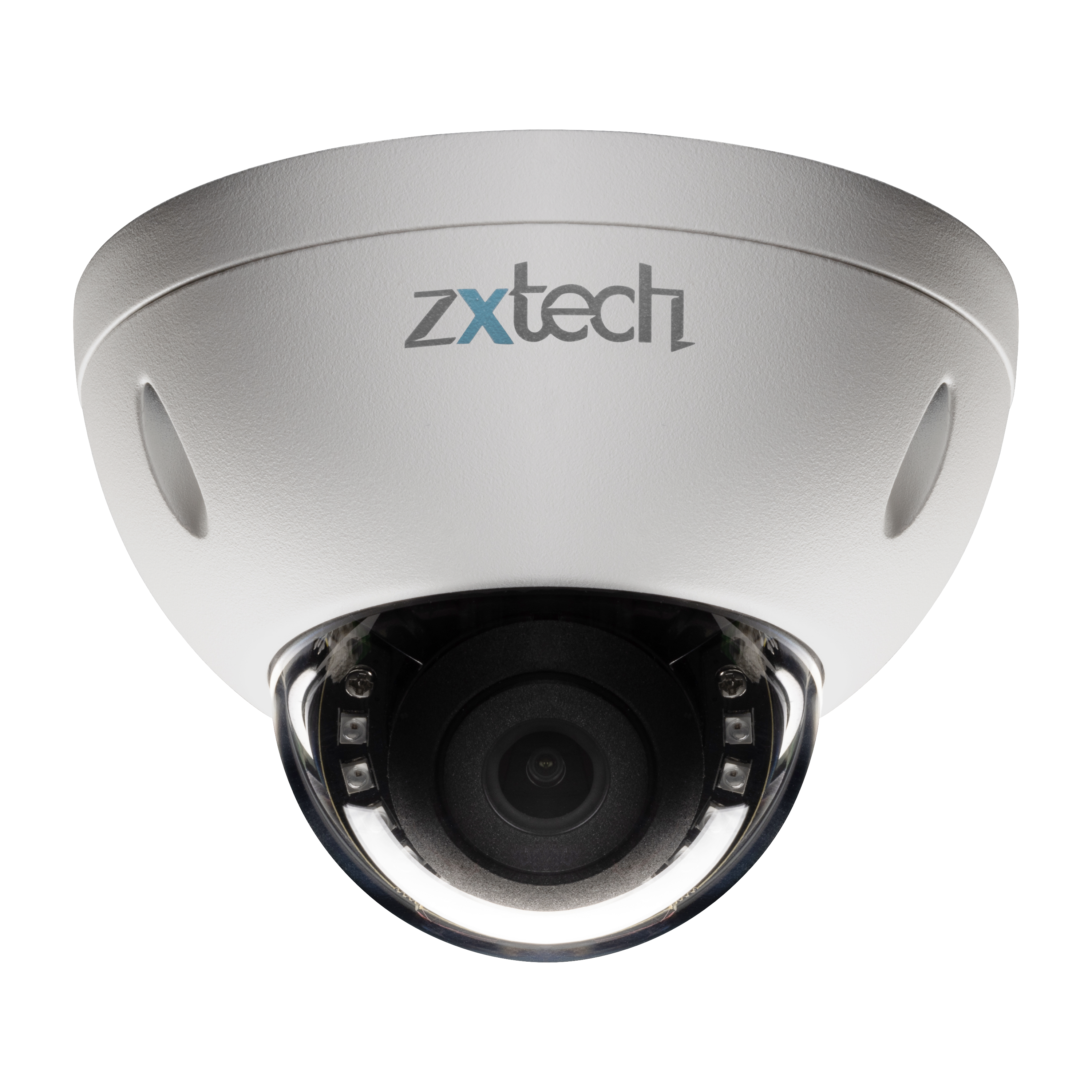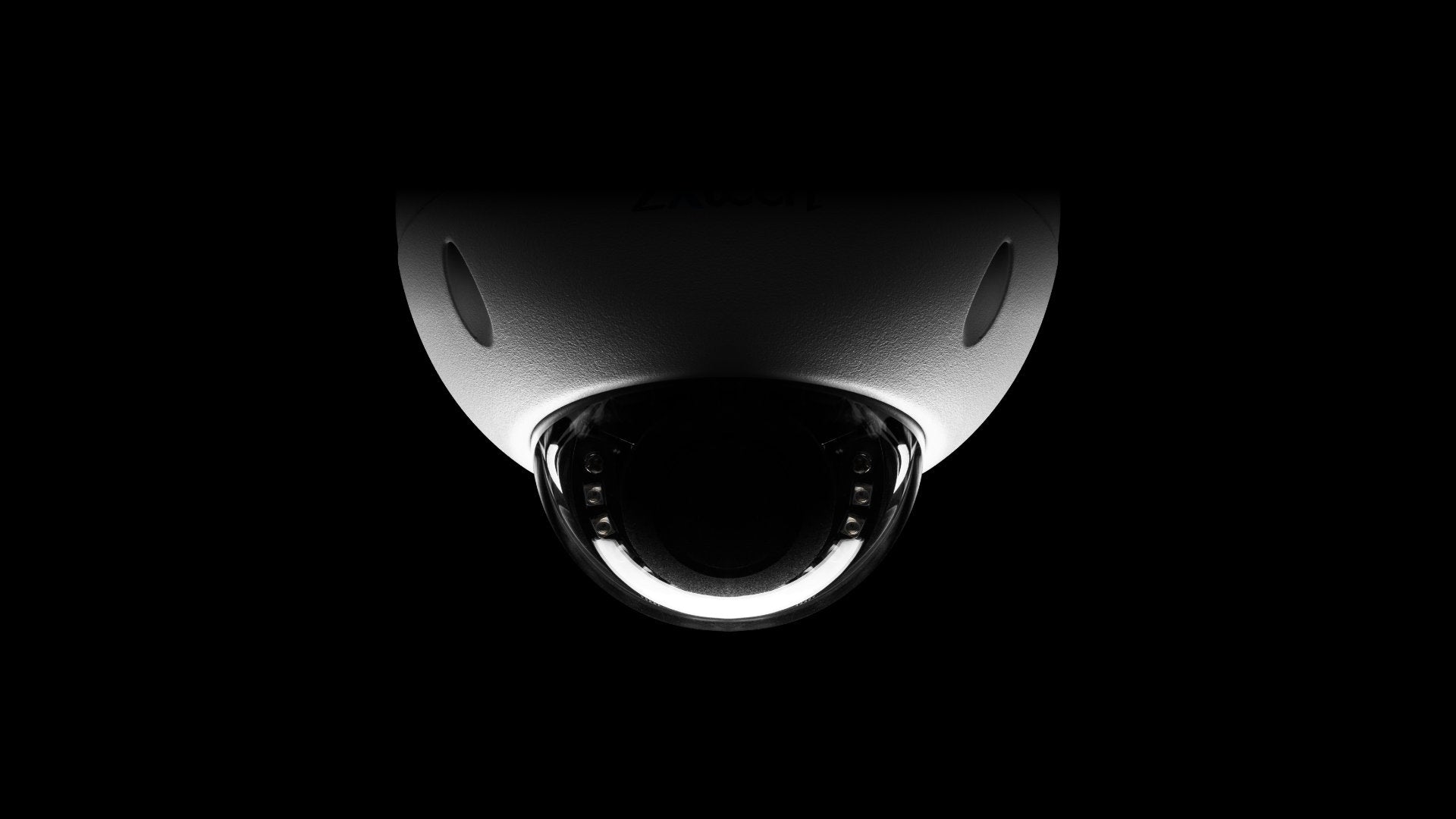
Filters
1 product
IK10 Vandal-resistant CCTV Security Cameras
What is IK10 camera?
An IK10 camera refers to a security or surveillance camera that is rated as IK10 according to the European EN 62262 standard, which relates to the degrees of protection provided by enclosures for electrical equipment against external mechanical impacts. An IK10 rating is the highest mechanical impact protection level on the scale, indicating that the camera is protected against 20 joules of impact, which is equivalent to the impact of a 5 kg mass dropped from 400 mm above the impacted surface. This makes IK10-rated cameras suitable for areas where they might be subject to vandalism or other forms of physical impact.
How is the Camera Vandal-resistant with the glass?
An IK10-rated camera with a glass dome is designed to withstand significant impacts. The glass used in these domes is not ordinary glass; it is usually toughened or tempered glass, which is much stronger than standard glass. Additionally, it may be further reinforced with additional treatments or a specific design to distribute the force of impacts more effectively, thereby increasing its resistance to breaking or shattering.
The dome shape itself is also a factor in its impact resistance. A dome distributes the force of an impact across its surface, which can help to minimize damage at any single point. This is similar to how the design of an eggshell distributes pressure to make it strong despite its thinness.
In the case of an IK10 rating, the camera should be able to resist the equivalent of a 5 kg mass dropped from 40 cm without being damaged. This means it should remain functional even after being subjected to such force, protecting the internal components from harm. However, while the IK10 rating indicates a high level of protection, it is not a guarantee that the camera is indestructible; extremely forceful impacts or repeated abuses can eventually damage even high-rated equipment.
What is IK10 camera used for?
IK10-rated cameras are particularly used in environments where there is a risk of impact or vandalism. Some common applications include:
- Public Spaces: Such as train stations, parks, or city streets where vandalism is a concern.
- Educational Institutions: Schools and universities often use them to prevent damage caused by roughhousing or vandalism.
- Correctional Facilities: Prisons and detention centres use these cameras for their robustness in high-security areas.
- Industrial Sites: Factories and warehouses might use them to protect against accidental impacts from machinery or vehicles.
- Commercial Areas: Retail stores, banks, and other businesses that may be targets of theft or deliberate damage.
- Transportation: Airports, subways, and bus terminals where equipment might be subject to rough treatment.
- Sports Venues and Recreation Centers: Where balls or other equipment could strike and damage a standard camera.
The IK10 rating ensures that surveillance technology can withstand harsh treatment, which allows these cameras to be placed in areas where they can capture crucial footage without being easily disabled or destroyed.
What are other words to describe the IK10 cameras?
Alternative terms for IK10-rated cameras often emphasize their durable and robust nature. They may be described as:
- Vandal-resistant cameras
- Vandal-proof cameras
- Impact-resistant cameras
- Rugged cameras
- High-durability cameras
- Tamper-proof cameras
These terms highlight the camera's ability to resist physical abuse, tampering, and intentional damage.
What is an IK10 CCTV system?
An IK10 CCTV (Closed Circuit Television) system refers to a video surveillance system where the cameras are rated with an IK10 designation, indicating the highest protection against mechanical impacts as defined by the EN 62262 standard. This means that the cameras within the system are capable of withstanding the equivalent force of 20 joules, which is roughly the impact of a 5 kg mass dropped from 40 cm above the surface.
Such a system would be robust against vandalism and suitable for high-risk areas where cameras could be subject to physical abuse. The entire system, which includes the cameras, recording devices, and any associated hardware, is designed to operate in challenging environments without the surveillance capability being compromised by physical damage to the cameras.
What is the other IK rating? What would normal CCTV cameras be rated at?
The IK rating is part of an international standard known as EN 62262 (the European standard) or IEC 62262 (the international equivalent), which classifies the degree of protection provided by enclosures for electrical equipment against external mechanical impacts. The scale ranges from IK00, which offers no protection, up to IK10, which provides the highest level of protection.
Here is a brief overview of the IK ratings:
- IK00: No protection
- IK01: Protected against 0.14 joules impact (equivalent to the impact of 0.25 kg mass dropped from 56 mm above the impacted surface)
- IK02: Protected against 0.2 joules impact (0.25 kg mass dropped from 80 mm)
- IK03: Protected against 0.35 joules impact (0.25 kg mass dropped from 140 mm)
- IK04: Protected against 0.5 joules impact (0.25 kg mass dropped from 200 mm)
- IK05: Protected against 0.7 joules impact (0.25 kg mass dropped from 280 mm)
- IK06: Protected against 1 joule impact (0.25 kg mass dropped from 400 mm)
- IK07: Protected against 2 joules impact (0.5 kg mass dropped from 400 mm)
- IK08: Protected against 5 joules impact (1.7 kg mass dropped from 300 mm)
- IK09: Protected against 10 joules impact (5 kg mass dropped from 200 mm)
- IK10: Protected against 20 joules impact (5 kg mass dropped from 400 mm)
Normal CCTV cameras that are not specifically rated for impact resistance might not have an IK rating at all, or they might have a lower rating such as IK01 or IK02, which offers very minimal protection against impact. Cameras in more secure installations or areas prone to vandalism or accidental damage might be rated at IK08 or higher to ensure they continue to operate after any unintended impacts.
What is the benefit of IK10 cameras?
The benefits of IK10-rated cameras are significant, especially in environments where durability and resistance to physical damage are critical. Here are some key advantages:
-
Vandalism Resistance: They offer the highest protection against vandalism. This is essential for surveillance in areas prone to criminal or mischievous activities.
-
Durability: IK10 cameras are built to last, capable of withstanding significant impacts that might otherwise destroy less sturdy equipment.
-
Cost-Effectiveness: Although they may have a higher upfront cost, their durability can make them more cost-effective in the long run by reducing the need for replacements or repairs.
-
Reliability: In critical security situations, the resilience of IK10 cameras ensures that they keep functioning, providing continuous surveillance without interruption.
-
Installation Flexibility: With their robust build, they can be installed in a wider range of environments, both indoors and outdoors, without requiring additional protective housing.
-
Lower Maintenance: They typically require less maintenance, as they are less susceptible to damage from everyday knocks and bumps.
-
Insurance and Liability: They may reduce insurance costs or liability risks since they can help ensure continuous operation and evidence collection.
-
Peace of Mind: For businesses, government entities, and even private residences, knowing that surveillance cameras are less likely to be tampered with can offer peace of mind.
Overall, the high impact resistance of IK10 cameras makes them suitable for high-risk areas, ensuring that surveillance is not compromised by physical attacks on the camera itself.
How to install an IK10 CCTV camera?
Installing an IK10 CCTV camera involves several steps, and it's important to follow the manufacturer’s instructions since the process can vary depending on the specific model and brand. Here's a general guide on how to install an IK10-rated CCTV camera:
-
Site Planning:
- Choose the right location for the camera, considering coverage area, lighting conditions, and height for optimal field of view while also being mindful of potential impacts or threats.
- Ensure there is a nearby power source and means of routing cables, if not using a wireless camera.
-
Mounting the Camera:
- Use a drill to make holes for the mounting screws, following the template often provided with the camera.
- Secure the camera base or mounting bracket to the surface using the appropriate screws and wall plugs for the material (e.g., brick, concrete, drywall).
-
Cable Routing:
- For wired systems, route the coaxial or Ethernet cables from the camera location to the DVR/NVR, avoiding any potential hazards or pinch points.
- If the system is wireless, ensure that there is a strong and secure Wi-Fi signal or other wireless connectivity at the installation point.
-
Connecting the Camera:
- Connect the power supply and video cables (if a wired camera) to the camera. Ensure that all connections are secure and waterproof if outdoors.
- For PoE (Power over Ethernet) cameras, you'll only need to connect the Ethernet cable as it will carry both power and data.
-
Adjusting the Camera:
- Position and focus the camera to cover the desired area. IK10 cameras often have a dome cover that is screwed on, so ensure this is securely fastened to maintain the protective rating.
- Check the live feed to make adjustments to the camera angle and focus for the best image quality.
-
System Configuration:
- Connect the camera to the DVR/NVR or directly to a network, if it's an IP camera.
- Configure the camera settings using the system interface, setting up aspects such as recording schedules, motion detection zones, and alerts.
-
Testing:
- Test the camera thoroughly to ensure it is working as expected. Check the video feed during different times of the day and night, and make sure the camera is recording according to your settings.
- Test the camera's durability feature by gently applying non-damaging pressure to ensure it is securely mounted and the dome is properly attached.
-
Maintenance Checks:
- Regularly clean the camera lens and dome with a soft, clean cloth to ensure clear visibility.
- Inspect the camera's physical and functional status periodically.
Remember that safety is paramount. Always ensure power tools are used correctly and safety gear is worn during installation. If you are not comfortable with the installation process, it's advisable to hire a professional. Additionally, always consider legal requirements regarding privacy and surveillance when installing CCTV systems.
Next Business Day Delivery
Place orders before 3pm for next business day delivery. Free shipping for all kits.
Customer service
Reach out Mon-Fri, 9am-5pm. Response within 24 working hours.
Refer a friend
Earn rewards when your friends make a purchase.
VAT Invoices
We always include your VAT invoices in your delivery.
Discover everyday privacy protections.
Privacy is Our Priority.
Privacy is a fundamental human right. At Domar CCTV, it is also one of our core values. Your devices are important to your safety. We sell our products to protect your privacy and give you control over your information. It's not always easy, but those are the principles we believe in.

Face Detection Data
Our cameras come with smart face detection features. Face detection data exist only on your device and can be deleted at any time. It does not go anywhere else. Face detection features can be turned off at any time.

Video Footage
Your security footage is protected by your password and cannot be accessed without it. Once you have changed the default password of the device, only manufacturer can reset it, after confirmation of purchase and identity.

Audio Data
Audio recording can be turned on and off if the camera is equipped with a microphone. It cannot be accessed without your password.

App Access
One device can link up with a single mobile app account. However, you may share it with another account and cease sharing at any time.

